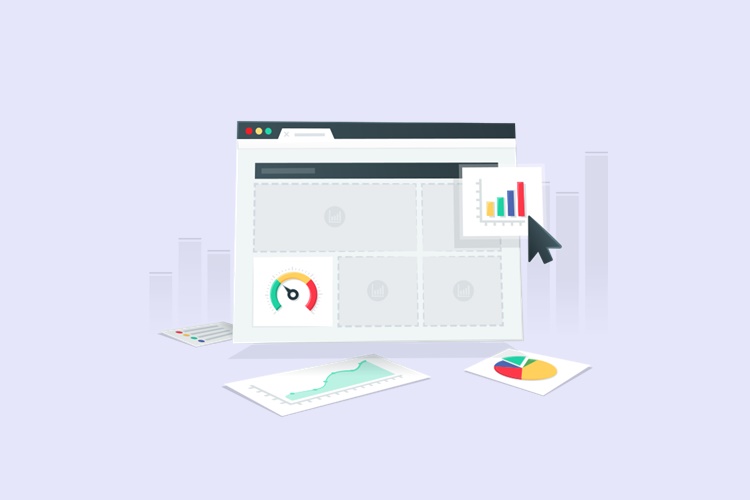Traffic is just one of the metrics you should track to measure your blog’s performance. If you’re judging the success of your blog based solely on the traffic it generates, you’re probably neglecting the other metrics that add context to blog traffic data. Information helps us understand what we need in order to improve to produce a better product. Metrics will help you understand what your blog needs to provide in order to attract new readers, keep existing ones, and ensure your readers are staying on your page as long as possible.
If you’re just measuring traffic to your blog, a post with 30,000 visits may look like a success, but if everyone who is visiting your post is leaving within 15 seconds, then you need to figure out why. Also, if visitors aren’t viewing another page on your site, there is a problem that needs to be addressed. The goal isn’t just to get people to your website; they should be engaged with the content you’ve produced with the ultimate goal of converting them to buy if you offer a product, or enticing them to return to read more of your content later or visit more pages if your monetary model is advertising. Measuring the success of your blog based on traffic alone can lead to low-quality content.
There are five blog metrics you should track in Google Analytics to measure the performance of your blog:
- Page Views
- Traffic by Channel
- Time Spent on Page
- Bounce Rate
- Pages Per Visit
- Returning Visitors
- Top Traffic Posts
- Social Shares Per Blog Post
- Clicks from Social Platforms
- New Blog Leads and Customers
- Posts That Bring in the Most Leads and Customers
- Conversion Rates
- Lead Source Breakdown
- Total Email Subscribers
- Email Open Rates
- Email Click-Through Rates
- Number of Blog Posts Published.
These metrics will provide what you need to understand and add context to your traffic data. Understanding what your readers and customers are doing on your page will help you make more informed, data-driven decisions.
Page Views
This is the most basic data point you can use to gauge how many people saw your post.
A “page view” is a measure of any time a user views a page on your website. This also includes multiple visits and page refreshes. This is just the start.

Page views can often be tracked through Google’s page views tracking tool.
Keep track of your social media calendar so you know which channels you’ve shared the post to. This will also help keep track of paid promotion.
Unique pageviews is another option to track. If a user visits a post multiple times in one session, it will only count for one pageview.
Traffic by Channel
A “channel” is any path visitors take to reach your website and other content, users may arrive at your blog through your social media channels while others get there via search channels. In Google Analytics, filter your pageview data by channel. Google provides a list of channel definitions as they pertain to tagging in its analytics system.

Time Spent on Page
All the metrics above can be analyzed to determine quality. By analyzing the time users actually spent on a page, you can determine if your content is actually being read.
There is no recommended key number to look for in this case because it varies depending on the type of post, word count, number of visuals, and quality of the content.

The longer you collect data and keep it, the better you can identify what’s working and what’s not working. This will also help you determine what to create more of. For example, when I noticed that “work online” and “remote work” posts were doing the best on my blog, I went to Fiverr and hired someone to write a series of unique helpful posts about these specific topics. I wanted to provide real how-to, where-to and what-to-do posts that people can use when looking for their specific industry’s online jobs.
Long content is a big-time investment, so if you’re finding that visitors are spending just as much time on these as on short 300-word posts, then you may be better off sticking with the shorter posts until you can figure out how to enhance the quality of the longer posts and get readers to stick around.
Pages Per Visit
When you measure “pages per visit”, you’ll typically start with an average of the number of pages viewed over a given hour or day, divided by the number of site visitors during that same time period. This data will help you determine how users are interacting with your posts. If you have pretty substantial traffic overall, but your pages per visit average is on the low side, you might want to reconsider your linking strategy. For example, if you have content with a lot of external links but not many internal links, you might be losing visitors who would otherwise stay on your website and explore your other content. I’ve read that one to two relevant links per post is a good way to keep readers on your website.
If I’m writing about an online job and my previous post on networking is going to be helpful for the reader, then I’ll link them to the networking post. From the networking post, I have another link to another networking post for online networking, then from there to another post. When readers can go from post to post easily they will keep coming back for more.
Engagement
Engagement is any way readers interact with your blog (besides simply reading its content). Determine what you consider to be valuable — this may include clicks, comments, social shares, and so on.

Conversions
Conversions are used to track sales, but a “conversion” can also be any action you’d like to encourage on your blog. You can measure sign-ups to an email list, or downloads of a free e-book or PDF. Whatever conversations represent on your blog, you should understand your conversion rate to help you improve it.

Determine:
- Which are your most popular posts, and why?
- Is it because of post length?
- Topics that resonated with your readers?
- Number of social shares
- Time of day you shared on social networks
Once you know which of your posts are successful, you can improve on your successful posts by creating more posts like them, providing additional information on the topic, and drive more traffic by increasing the frequency of your blog posts.
Average Time on Page
In order to have a successful blog, your posts need to be valuable to you and your audience, and people need to spend a fair amount of time on your page. This indicates that they’ve read your content, which tells Google that your visitors are interested in your site, ultimately improving your organic search ranking. This means your page will show up in more searches and ultimately make you more money.
Identify which of your posts are popular and which channels bring the most traffic to your blog. Then, estimate how much time you want a visitor to spend on your page. Comparing that to the current average time on page, determine a realistic number to challenge yourself to improve your metrics. Keep adding to this goal so that you continue to produce quality, well-performing posts.
If you’ve written a blog post that’s a 7-minute read, your ideal visitor will spend 6 to 8 minutes, but skimmers will spend half that. If you create good quality content to read, skimmers will stop skimming and actually read. I know this because I’m a skimmer, and I don’t read anything unless I see that it has valuable information that I want or need, and when it does, I stop skimming and start reading. Study your own habits when reading material online, and get inside your readers’ minds.
New Versus Returning Visitors

The best way to ensure you have a strong audience is by building loyalty. A loyal following can give you much more influence than a large number of people who never really stick around. That’s because transient audiences are unreliable and contribute very little to your growth. Check out the post on Keep Your Customer.
Determining how influential your blog is by going to the “Audience – Behavior – New vs Returning” tab. If this is your first time checking this metric, you can look at your numbers for the past 12 months to get an idea of how much loyalty you’ve built in the past year.
Keep your focus on the meaningful metrics that help you understand which content is valuable to your audience, which channels send relevant traffic your way, and how effective you are at building a loyal audience and giving those readers what you know they want. It is ideal to go through this data weekly and then maybe hire a consultant or an expert who can help you determine what changes will be most impactful for the success of your blog. It’s hard to critique ourselves sometimes.
Be patient and have fun with it. If you want to learn some of the ways to make money blogging read the article here.
Get a domain: https://www.shareasale.com/r.cfm?u=2840783&m=46483&b=2382508
Subscribe for more business, sales, and investing posts. Have a lovely day.











